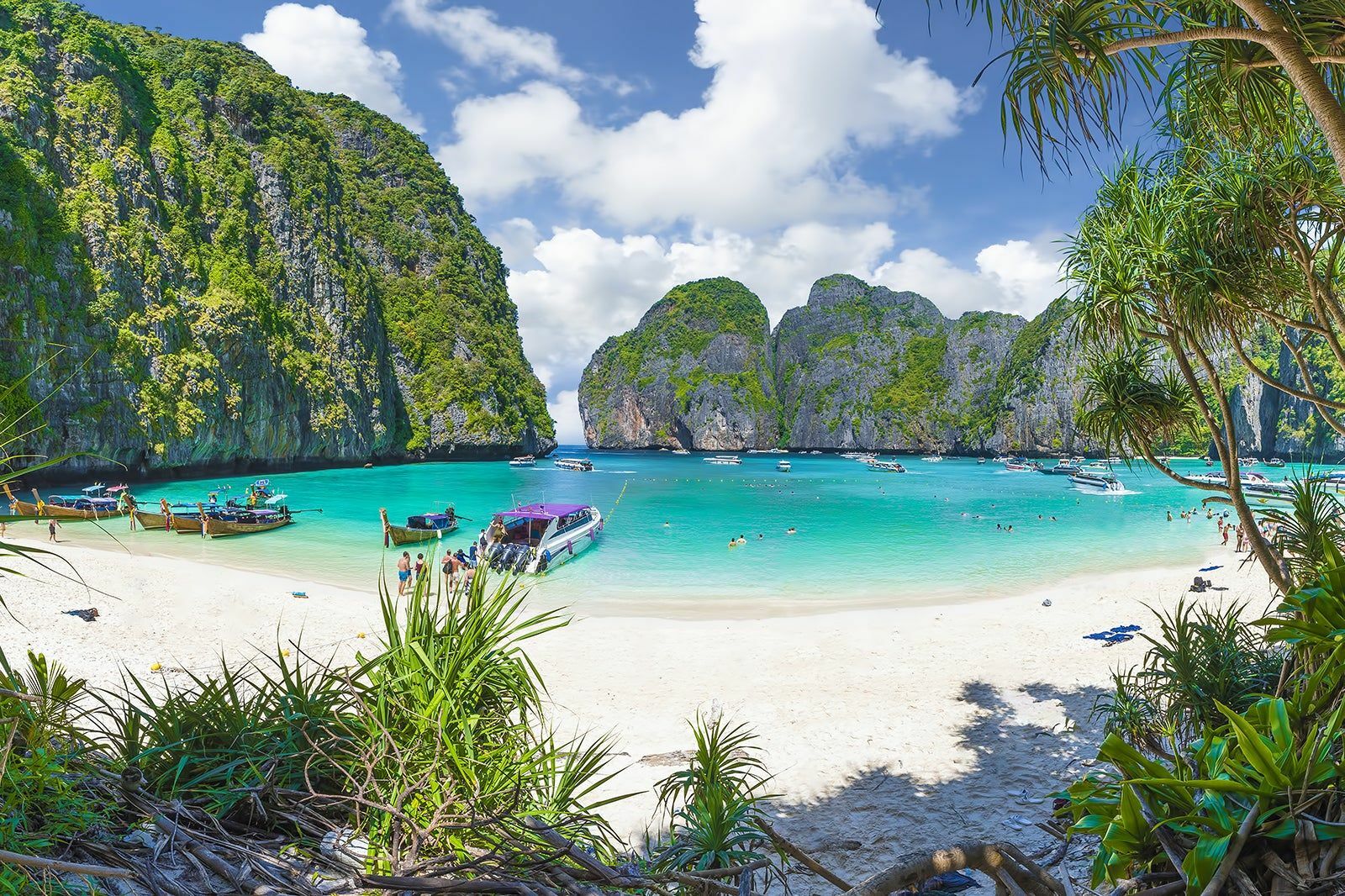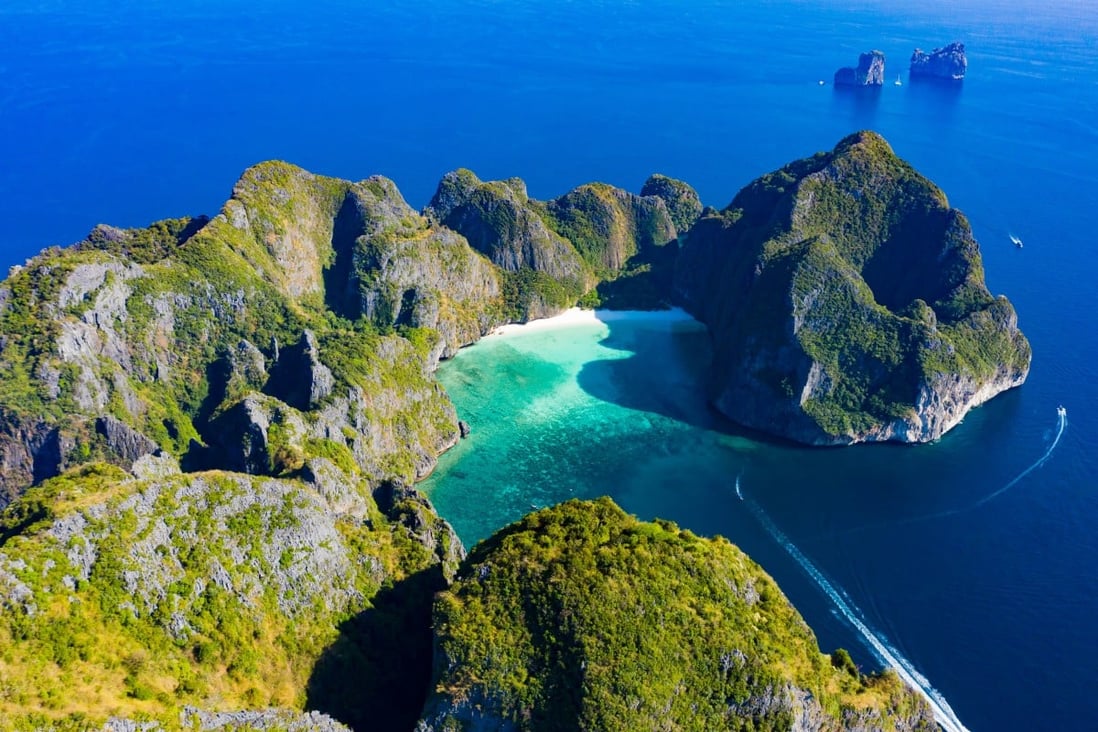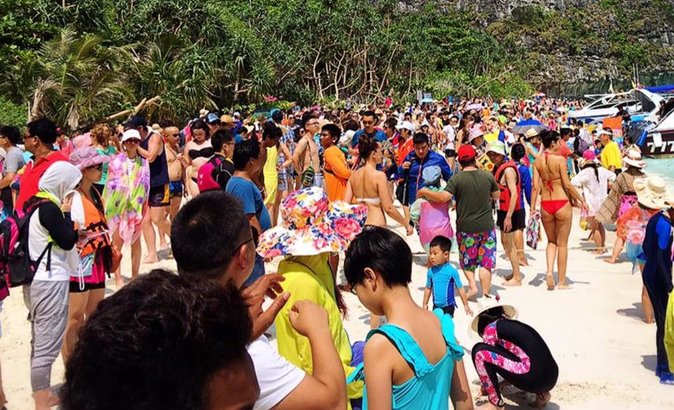Restoration of Maya Bay balances tourism, sustainability
Sea life is flourishing in Phi Phi Islands’ tropical paradise

The restoration of Maya Bay, Thailand, balances tourism with sustainability. Phi Phi Islands’ tropical paradise, made famous by Leonardo DiCaprio’s movie The Beach, has drastically reduced visitor numbers, and sea life is flourishing.
The beach was closed in 2018 and before the pandemic hit, and in many respects, the past two years without pressure from great numbers of visitors have allowed the environment to recover. But how long will it last?
Last year, Thailand’s Supreme Court has ruled that Hollywood movie company 20th Century Fox – now renamed 20th Century Studios – must pay 10 million baht (US$290,000) for environmental damage to Maya Bay.
China’s State news agency, Xinhua, reports on how Maya Bay, the spot made famous in the movie, once saw thousands of visitors each day, with destructive results for the local coral reef and marine ecosystem.
Trail of devastation leads to the restoration of Maya Bay

As sightseeing boats head into the turquoise waters of Maya Bay, a floating rope keeps them a few hundred metres away from the glistening beach, leaving tourists to peer at the beauty from afar before the boats turn back and depart.
The boats then navigate to the back of the bay, where a floating pier has been built for brief but necessary photo stops. Tourists disembark and are marshalled along a wooden pathway through the jungle to the famed white sand beach.
It’s hard to imagine that just five years ago, the beach was swarming with thousands of speedboats and tourists daily, leaving a trail of devastation and compelling authorities to close Maya Bay in mid-2018.
Restoration of Maya Bay, ‘most successful marine action’

Thon Thamrongnawasawat of the faculty of fisheries at Kasetsart University said…
“It is one of the most successful marine actions in many years, not only for Thailand but for the whole world.”
Thon said the number of people entering Maya Bay beach has been reduced from around 7,000 per round to just 400, with strict limits on activities and length of stay.
Tourists are only permitted in the water below their knees, an obvious way of avoiding disturbance to the fragile ecosystem.
This massive reduction in tourism has spawned the rapid restoration of Maya Bay. Thon recently observed over 100 black-tip reef sharks swimming in the shallow waters of the bay.
Marine Discovery Center

The private sector has played an important role, exemplified by the Marine Discovery Center, established in 2018, ironically just before the bay was closed. The centre is located within a luxury resort on Koh Phi Phi Don and is dedicated to education and marine life cultivation.
According to Kullawit Limchularat, of Singha Estate, the owner of the resort, the centre runs projects such as breeding clownfish and bamboo sharks in collaboration with government agencies. Around 50 clownfish and 25 bamboo sharks have been released into their natural habitats. In addition, the facility is open to the local community and schools and organises visitors into beach clean-up and mangrove planting squads.
Since its opening, the centre has seen close to 17,000 visitors.
Thon is optimistic. The most challenging part of balancing tourism and ecology is behind them and the focus is now on retaining the progress that has been made in the long term, to ensure Maya Bay never falls into such a state again.
Read the full story at https://english.news.cn

Latest Thailand News
Follow The Thaiger on Google News:


























